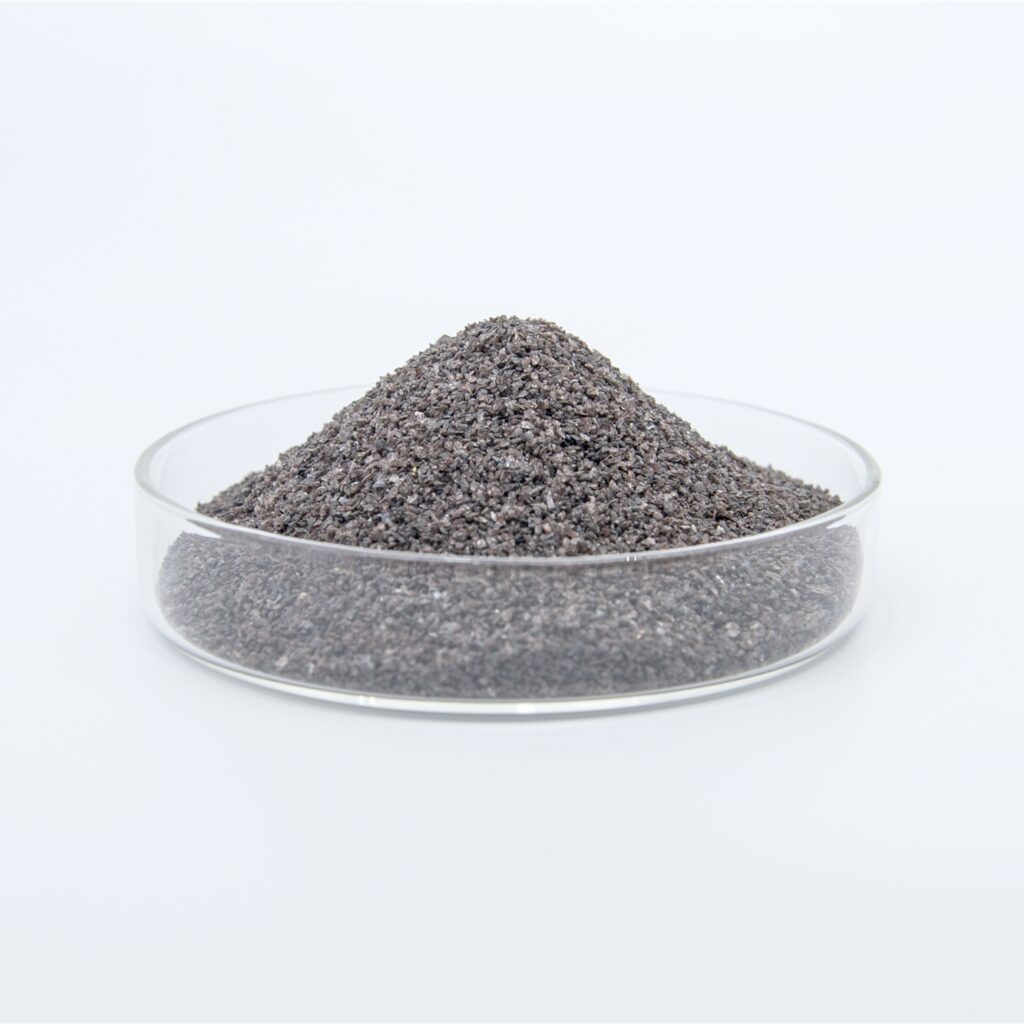Brown Aluminum Oxide (BAO) is the most widely used abrasive grain in the world for a reason. It strikes an ideal balance between hardness, toughness, and cost, making it the backbone of the bonded abrasive and coated abrasive industries.
1. Core Properties: Why It’s Ideal for Abrasives
The value of BAO for abrasive tools comes from its fundamental physical and chemical properties:
High Hardness (Mohs 9): Hard enough to effectively cut a vast range of materials, including high-tensile strength metals.
Exceptional Toughness: This is its defining characteristic. The crystal structure of BAO is tough and self-sharpening. Instead of dulling flat, the grains fracture to reveal new, sharp cutting points. This extends the useful life of the tool.
Sharp & Angular Morphology: When crushed, BAO grains form sharp, blocky shapes with multiple cutting edges, ideal for aggressive stock removal.
Chemical Purity (~95% Al₂O₃): The remaining impurities (like TiO₂ – Titanium Dioxide) actually contribute to its toughness by modifying the crystal growth during manufacturing.
2. Primary Applications in Abrasive Tools
BAO’s versatility allows it to be used in two main forms of abrasive products:
A. Bonded Abrasives (Grinding Wheels, Sharpening Stones, etc.)
In these tools, BAO grains are held together by a bonding material (like vitrified ceramic, resin, or rubber).
Grinding Wheels (Vitrified & Resin Bond): This is the largest application.
Bench and Pedestal Grinders: For general-purpose grinding, deburring, and weld cleaning on carbon steels, alloy steels, and tough iron.
Snagging Grinders (Foundries): Used for heavy-duty grinding of castings and forgings to remove excess metal (gates, risers, surface defects). Its toughness is essential to withstand the high pressures involved.
Cut-Off Wheels: BAO is a primary grain in wheels for cutting structural steel, rebar, and other ferrous metals.
Internal Grinding Wheels: Used for precision grinding of the inside diameters of components.
Sharpening Stones:
Common in oilstones and waterstones for sharpening tools like chisels, knives, and garden implements.
B. Coated Abrasives (Sandpaper, Abrasive Belts & Discs)
Here, BAO grains are glued onto a flexible backing (paper, cloth, or polyester).
Abrasive Belts & Discs: The workhorse for metalworking.
Metal Fabrication: Used on portable angle grinders and stationary belt grinders for weld blending, deburring, and stock removal.
Woodworking: While less common than for metal, it’s used for shaping and sanding hardwoods.
Sandpaper Sheets: Used for hand-sanding metal, wood, and painted surfaces in both industrial and DIY settings.
3. How It Compares to Other Abrasive Grains
Understanding where BAO fits in the abrasive family is key:
| Abrasive Grain | Hardness | Toughness | Primary Use Case vs. BAO |
|---|---|---|---|
| Brown Aluminum Oxide (BAO) | High (9) | Very High | The “standard” for ferrous metals. Tougher and more durable than white alumina. |
| White Aluminum Oxide | High (9) | Medium | More friable (shatters easily), stays sharper for precision grinding on hard, heat-sensitive steels. Less durable than BAO. |
| Silicon Carbide (SiC) | Very High (9.5) | Brittle/Low | Much harder but more brittle. Ideal for low-tensile materials like aluminum, copper, rubber, stone, and glass. |
| Zirconia Alumina (ZrO₂) | Very High | Exceptional | The premium choice for heavy-duty pressure grinding. The zirconia content allows for a “self-renewing” cutting action under high pressure. |
| Ceramic Aluminum Oxide | Highest | Engineered Friability | A high-performance, engineered grain that micro-fractures to stay extremely sharp. Often blended with BAO or Zirconia. |



